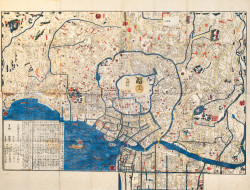
October 21, 2010
Hagakure (The Manga Edition)
Originally published on metropolis.co.jp on October 2010 It may be the defining text of samurai culture, but Yamamoto Tsunetomo’s Hagakure was always a bit of a slog. In its original form, it rambled on across more than 1,300 stories and assorted nuggets of philosophy, ranging from tales of valor and seppuku to advice on how […]
By Metropolis
Originally published on metropolis.co.jp on October 2010
It may be the defining text of samurai culture, but Yamamoto Tsunetomo’s Hagakure was always a bit of a slog. In its original form, it rambled on across more than 1,300 stories and assorted nuggets of philosophy, ranging from tales of valor and seppuku to advice on how to stifle a yawn and the correct use of toothpicks.
Readers who found themselves glazing over after the umpteenth anecdote about Lord Mitsushige might appreciate this comic-book adaptation, which marks the inaugural release in Kodansha International’s new line of original manga. Expat manga scribe Sean Michael Wilson and London-based artist Chie Kutsuwada have managed to capture some of the subtlety of Tsunetomo’s text, without skimping on the guts and decapitations.
Even when it was released to a select audience in 1716, the Hagakure was essentially a relic of the past. Without any civil wars to keep them busy, Japan’s noble warriors had mostly eased into a life of glorified bureaucracy, leaving Tsunetomo to rail against the loss of the “way of the samurai.” He found a receptive audience in scribe Tashiro Tsuramoto, who compiled the Hagakure over the course of seven years of conversations with the former samurai retainer turned Buddhist priest.
Wilson has based this adaptation on the 1979 English translation by William Scott Wilson (no relation), which itself whittled the original down to a more manageable 300-odd sections. The bite-sized nature of the Hagakure lends itself well to the manga format, with Wilson letting the visuals take over at key moments, such as during a revenge killing in the streets of Edo.
He frames the action by inserting additional scenes between Tashiro and Tsunetomo, which help humanize things during the samurai sage’s more severe moments. (“Last year I went to the Kase execution grounds to try my hand at beheading, and I found it to be an extremely good feeling,” he remarks at one point. “To think that it is unnerving is a symptom of cowardice.”)
Some might quibble about the choice of excerpts, particularly an overall bias towards bloodiness, but I’ll say this: The Manga Edition is one version of the Hagakure that you won’t doze off trying to read.







